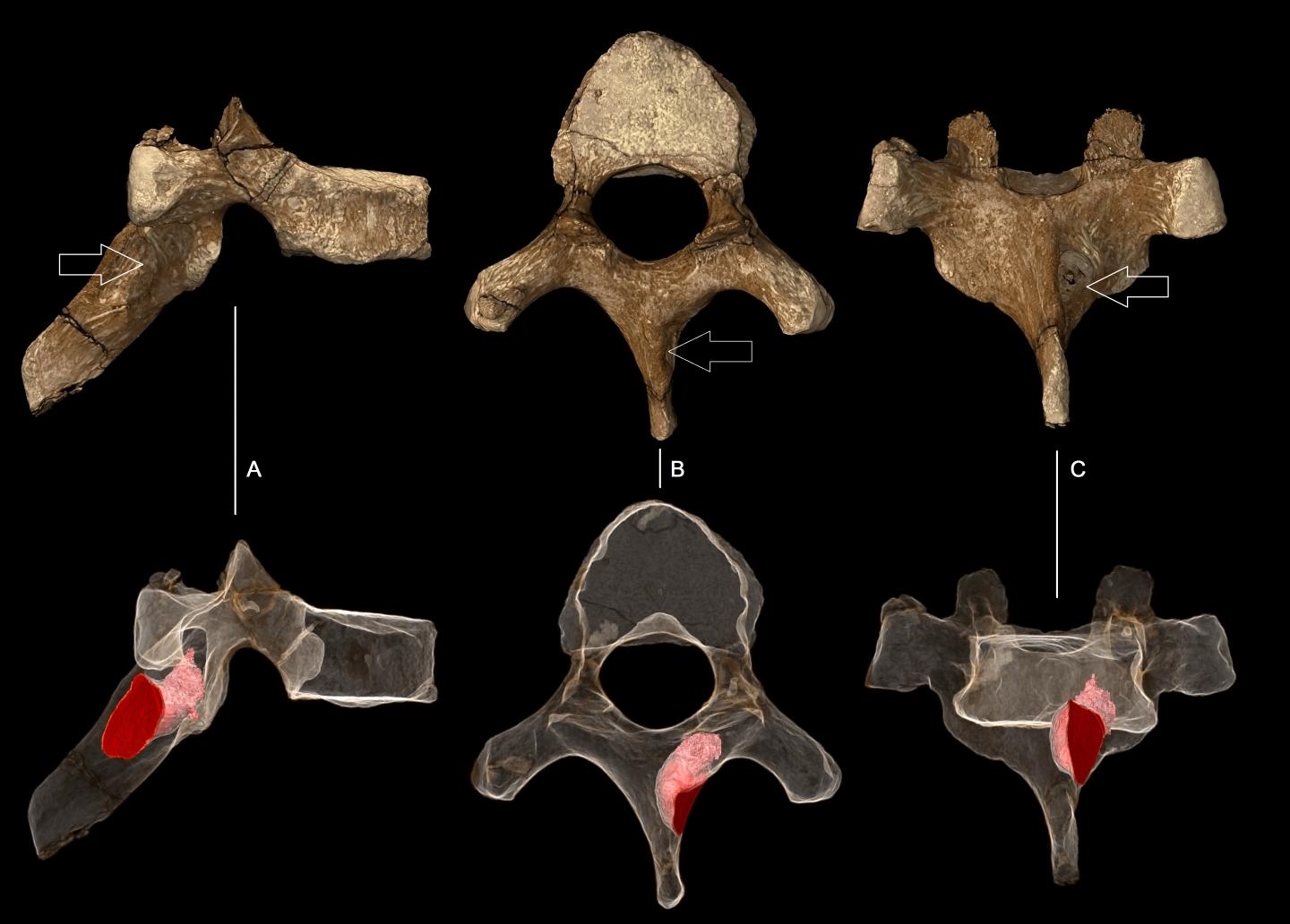The oldest evidence of human cancer has been found on a foot bone from Swartkrans National Heritage Site, South Africa. The discovery shatters the previous record, which was from a 120,000-year-old Neanderthal, and was published along with a paper reporting an even older benign tumor.
Advocates of “paleo diets” like to claim that cancers are a consequence of modern lifestyles. Air pollution and unhealthy diet certainly increase risks, but Witwatersrand University PhD student Edward Odes said in a statement: “Our studies show the origins of these diseases occurred in our ancient relatives millions of years before modern industrial societies existed."
Odes is first author of a paper in the South African Journal of Science reporting a 1.7 million-year-old metatarsal attacked by an osteosarcoma, an aggressive form of cancer. "Due to its preservation, we don't know whether the single cancerous foot bone belongs to an adult or child, nor whether the cancer caused the death of this individual, but we can tell this would have affected the individuals' ability to walk or run," said co-author Dr Bernhard Zipfel. "In short, it would have been painful."
The unfortunate individual was probably either a Homo ergaster or Paranthropus robustus. Bones from both species have been found at the site dating to 1.5 to 1.8 million years ago, the point at which this bone was laid down. However, the incomplete nature of the fossil has prevented attribution to a particular species, although the authors are confident it came from a hominid.

Surface rendered models of the metatarsal with spongy tissue and malignant tumor. Edward Odes (Wits)
The same edition of the journal includes a paper with many of the same authors reporting an even older benign tumor. In this case, the site is the vertebrate of a boy originally used to describe the species Australopithecus sediba. This is a famous fossil, 1.98 million years old and one of three extraordinarily well-preserved specimens that are considered among the most important hominid discoveries ever made.
The boy, known as M1, had the development of a 12- to 13-year-old modern human when he died. Already his sixth vertebra had a lesion, which the paper’s authors identify as a “probable…osteoid osteoma.” The authors note that, at the time, tumors “most likely occurred at much lower levels of incidence than today, given the shorter life expectancy for victims and the differing environmental context.”
Those ancient tumors that did occur would seldom have been of a sort that would leave fossil evidence, so the discovery of two among our limited record of possible ancestors from the early Pleistocene is extraordinary. However, examples from other animals date back 300 million years to Devonian fish.
“The position of the lesion may have affected normal musculoskeletal function and movement of both the shoulder-blade and the upper right quadrant of the back,” the authors write. The boy may also have suffered acute and chronic pain.

The Australopithecus sediba vertebrae and its lesion. Paul Tafforeau (ESRF)




